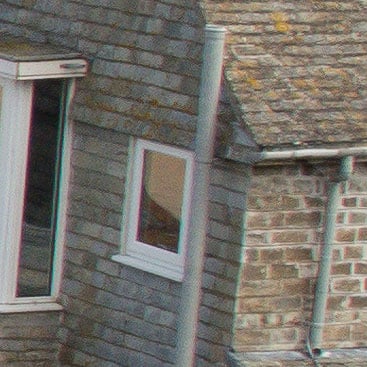Nikon COOLPIX A review
-
-
Written by Ken McMahon
Quality
Nikon COOLPIX A vs Olympus XZ-2 Quality JPEG
|
Nikon COOLPIX A |
Olympus XZ-2 | |
 |  | |
f5.6, 100 ISO |
f4, 100 ISO | |
 |  | |
f5.6, 160 ISO |
f4, 100 ISO | |
 |  | |
f5.6, 100 ISO |
f4, 100 ISO | |
 |  | |
f5.6, 100 ISO |
f4, 100 ISO |
Nikon COOLPIX A results : Quality / RAW quality / Noise / RAW Noise
Nikon COOLPIX A vs Olympus XZ-2 Quality RAW
|
Nikon COOLPIX A RAW |
Olympus XZ-2 RAW | |
 |  | |
f5.6, 100 ISO |
f4, 100 ISO | |
 |  | |
f5.6, 160 ISO |
f4, 100 ISO | |
 |  | |
f5.6, 100 ISO |
f4, 100 ISO | |
 |  | |
f5.6, 100 ISO |
f4, 100 ISO |
Nikon COOLPIX A results : Quality / RAW quality / Noise / RAW Noise
Nikon COOLPIX A vs Olympus XZ-2 Noise RAW
The image above was taken with the Nikon COOLPIX A. I’d pre-tested both cameras to determine the aperture that delivered the best quality results, for the COOLPIX A it was f5.6 with the Olympus XZ-2 producing the best quality images at f4. At its base sensitivity setting of 100 ISO the COOLPIX A metered an exposure of 1/4. In order to produce an equivalent exposure on the XZ-2 I applied +0.3EV exposure compensation resulting in a shutter speed of 1/8 also at 100 ISO. As usual both cameras were otherwise left on their default settings. I processed both sets of files in Adobe Camera RAW using identical settings: Sharpening at 70 / 0.5 / 36 / 10, Luminance and Colour Noise Reduction both set to zero, and the Process to 2012 with the Adobe Standard profile.These settings were chosen to reveal the differences in sensor quality and isolate them from in-camera processing. The high degree of sharpening with a small radius enhances the finest details without causing undesirable artefacts, while the zero noise reduction unveils what’s really going on behind the scenes – as such the visible noise levels at higher ISOs will be much greater than you’re used to seeing in many of my comparisons, but again it’s an approach that’s designed to show the actual detail that’s being recorded before you start work on processing and cleaning it up if desired. These crops conform fairly emphatically what we saw with the in-camera JPEGs on the previous page. The larger sensor of the COOLPIX A is generating less noise all the way up the ISO sensitivity range, meaning there’s less work for noise processing algorithms to do and better quality results. This is particularly true at the lower end of the sensitivity range where from 100 to 800 ISO the sensor produces very low levels of noise with linear incrmeents at each 1EV increase in sensitivity. As high as 6400 ISO, while there’s plensty of noise around it’s quite fine and isn’t clumping, with the result that edges aren’t breaking up and you can still just about read the text. Once again it is important to remember the XZ-2 has a brighter aperture than the COOLPIX A, and when both are set to 28mm equivalent coverage, the Olympus enjoys a stop and a third greater light gathering power. So if both cameras were using their maximum apertures and the same shutter speed, then the Nikon COOLPIX A would be forced to select a sensitivity just over double that of the XZ-2. So in the spirit of fairness, you should shift the XZ-2 results down a notch in the table below so that the 100 ISO sample is next to the Nikon at 200 ISO and so on. That said though, the larger sensor of the COOLPIX A quickly eliminates the benefits of a brighter lens on its rival. A camera with a big sensor outperforming one with a smaller sensor in terms of noise is no big surprise, but the COOLPIX A also manages to provide an additional 4 Megapixels of resolution over the Olympus XZ-2 as well cramming it all in to a smaller, lighter body. Now head over to my Nikon COOLPIX A sample images to see some more real-life shots in a variety of conditions, or head straight for my Verdict.
| ||||||||||||||||||||||||||||||||||||||||||||||||||||||||||||||||||||||||||||||||||||||||||||||||||||
Nikon COOLPIX A results : Quality / RAW quality / Noise / RAW Noise |
Nikon COOLPIX A vs Olympus XZ-2 Noise JPEG
The image above was taken with the Nikon COOLPIX A. I’d pre-tested both cameras to determine the aperture that delivered the best quality results, for the COOLPIX A it was f5.6 with the Olympus XZ-2 producing the best quality images at f4. At its base sensitivity setting of 100 ISO the COOLPIX A metered an exposure of 1/4. In order to produce an equivalent exposure on the XZ-2 I applied +0.3EV exposure compensation resulting in a shutter speed of 1/8 also at 100 ISO. As usual both cameras were otherwise left on their default settings. Just a reminder once again that the 16 Megapixel APS-C sized sensor in the COOLPIX is both physically bigger as well as providing higher resolution than the 1/1.7in 12 Megapixel sensor in the Olympus XZ-2. Despite its 4 Megapixel higher resolution, the size difference should, in theory at least, provide the COOLPIX A with better noise performance than the Olympus XZ-2 at the same ISO values. So how do the crops measure up? At the 100 ISO base sensitivity the COOLPIX A crop looks nice and clean with little if any visible noise. There’s just the beginnings of a fine texture in the 200 ISO crop, but you have look very closely to spot it. Similarly the step up to 400 ISO introduces a tiny bit more texture into the flat areas of colour, but these changes are very marginal. By 800 ISO, though, the cumulative effect makes the texture quite apparent in the 100 percent crop. At 1600 ISO the increase in noise is accompanied by a slight softening of the fine image detail, but this is still a very good level of detail and 1600 ISO is within the range that would be acceptable for general use and, at a pinch, for full-size reproduction. It’s not until you get to 3200 ISO that the noise begins to get very clumpy and ugly, at less than full size though, the 3200 ISO shot looks OK with a good level of detail, consistent white balance and good saturation. You can still read the text on the 6400 ISO crop which is impressive, and while it’s good to have the option of 12800 and even 25600 ISO, especially on a compact, they’re not options you’d want to choose other than in an emergency. The crops from the Olympus XZ-2 start off pretty well by comparison with the COOLPIX A. The 100 ISO crop shows a little more texture than the COOLPIX one, but the difference is slim and the fine detail looks good. There’s a slight step up in the noisy texture at 200, the degree is more than the COOLPIX and starting from a slightly noisier base level. Even so, there isn’t a huge degree of difference between the 200 ISO crops. At 400 ISO however, the XZ-2 is stuggling to keep pace with the excellent noise characterisitcs of the larger sensor in the COOLPIX A, and by 800 ISO the game is well and truly up, with the XZ-2 crop showing a much higher level of noise and lower level of detail than the COOLPIX A crop. The text on the 1600 ISO crop from the XZ-2 is already illegible which rules it out for genreal purpose shooting. The XZ-2’s sensitivity range tops out at 12800 ISO, but you wouldn’t want to venture beyond 1600 ISO other than in exceptional circumstances. It is however important to remember the XZ-2 has a brighter aperture than the COOLPIX A, and when both are set to 28mm equivalent coverage, the XZ-2 enjoys a stop and a third greater light gathering power. So if both cameras were using their maximum apertures and the same shutter speed, then the Nikon COOLPIX A would be forced to select a sensitivity just over double that of the XZ-2. So in the spirit of fairness, you should shift the XZ-2 results down a notch in the table below so that the 100 ISO sample is next to the Nikon at 200 ISO and so on. That said though, the larger sensor of the COOLPIX A quickly eliminates the benefits of a brighter lens on its rival. To find out how much of a role processing plays in keeping noise at bay in these crops take a look at my Nikon COOLPIX A RAW noise results page to see just how much noise is present behind the scenes. Or head over to my NIKON COOLPIX A sample images to see some more real-life shots in a variety of conditions.
| ||||||||||||||||||||||||||||||||||||||||||||||||||||||||||||||||||||||||||||||||||||||||||||||||||||
Nikon COOLPIX A results : Quality / RAW quality / Noise / RAW Noise |








































